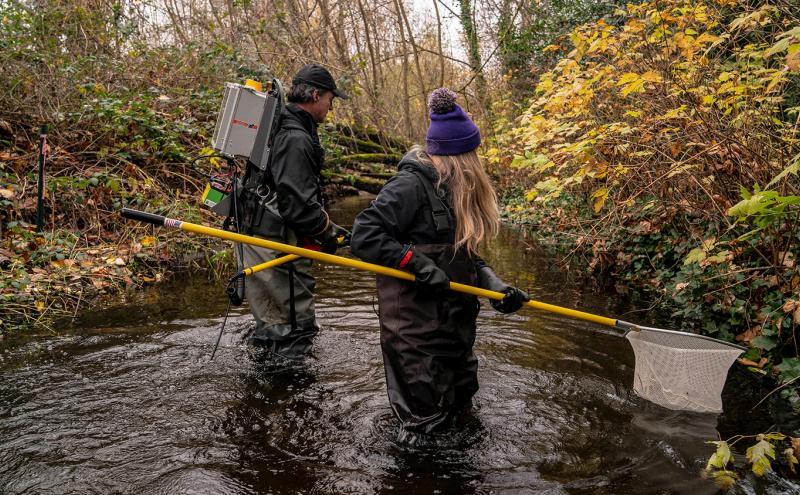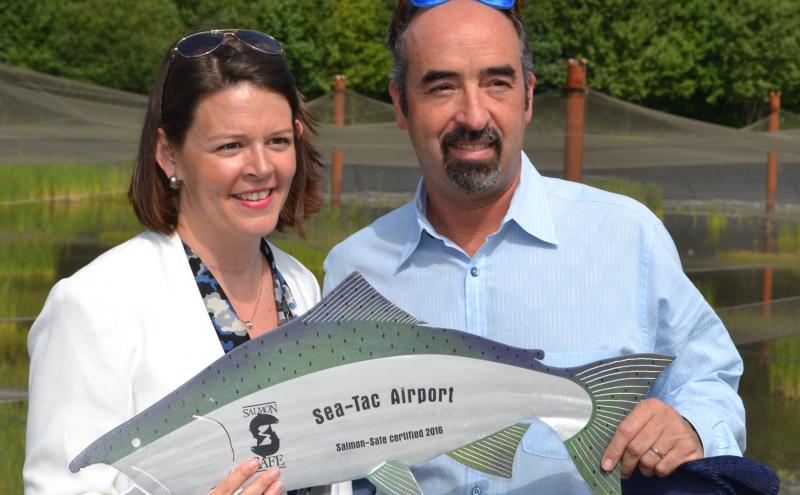
The Port of Seattle continues to lead the way in the region’s environmental stewardship through habitat restoration and water quality protection that helps salmon spawn and thrive in our local waterways. These efforts are reflected in its Salmon-Safe certification. This week the Port of Seattle Commission approved a first step toward validating these efforts for the next 20 years at Seattle-Tacoma International Airport (SEA).
In 2016, SEA Airport became the first U.S. airport to achieve certification through Salmon-Safe, an independent environmental certification organization focused on protection of water quality and wildlife habitat. Salmon-Safe’s standards define management practices for industrial sites, large-scale development, and other related land uses to protect Puget Sound water quality and salmon habitat. Salmon-Safe is a Portland, Oregon, based nonprofit working across West Coast salmon watersheds.
“SEA Airport set the bar for water quality protection for airports when it became the nation’s first Salmon-Safe airport,” said Dan Kent, co-founder and executive director of Salmon-Safe. “Now the airport is demonstrating further environmental leadership by seeking Salmon-Safe re-certification and committing to continuous improvement through further actions to protect Puget Sound,”
The Port’s innovative efforts that reflect the priorities of Salmon-Safe at SEA Airport are annually reviewed programs including stormwater management, construction practices, habitat protection, water conservation, and integrated pest management.
The Salmon-Safe certification is a significant validation of SEA’s efforts towards environmental sustainability and the Port’s Century Agenda goal to be the greenest port in North America.
What has SEA been doing to continue to be Salmon-Safe?
Here are some examples of the efforts already underway:
- Improving the effectiveness of on-site stormwater management strategies
- Reducing water use per passenger
- Finding opportunities for water harvesting – such as the rooftop rainwater collection at the N Concourse
- Maintaining clean construction sites to avoid turbid water releases and maintain healthy riparian habitat
- Adopting best practices for herbicide storage
What’s next?
Staff will return for final approval of the five-year certification by the Commission in a few months. This week’s approval will allow the certification cycle to continue a regular five-year term. SEA staff will work with Salmon-Safe and its team of independent scientists for site visits and documentation as part of the process, resulting in recommendations/conditions to adhere to during the new five-year certification.









